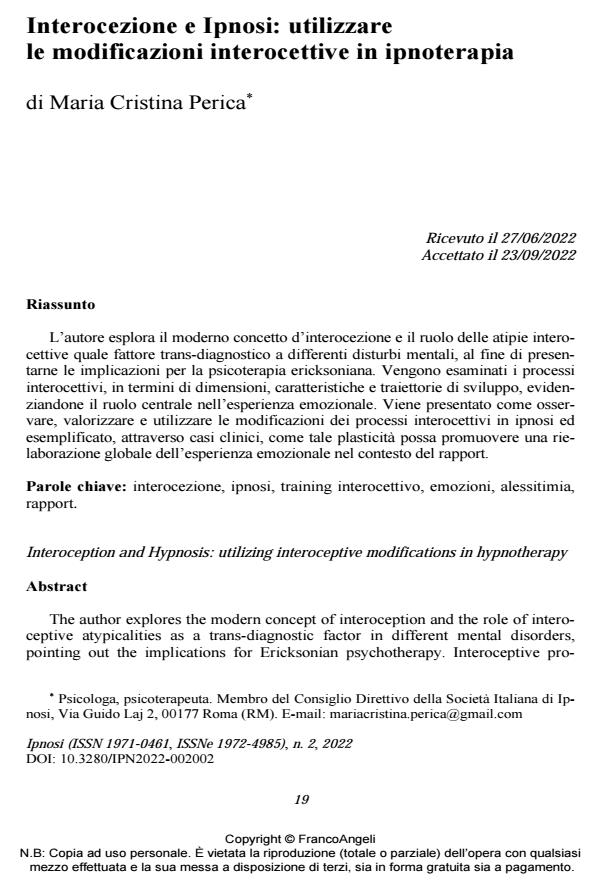Interoception and Hypnosis: utilizing interoceptive modifications in hypnotherapy
Journal title IPNOSI
Author/s Maria Cristina Perica
Publishing Year 2023 Issue 2022/2
Language Italian Pages 17 P. 19-35 File size 220 KB
DOI 10.3280/IPN2022-002002
DOI is like a bar code for intellectual property: to have more infomation
click here
Below, you can see the article first page
If you want to buy this article in PDF format, you can do it, following the instructions to buy download credits

FrancoAngeli is member of Publishers International Linking Association, Inc (PILA), a not-for-profit association which run the CrossRef service enabling links to and from online scholarly content.
The author explores the modern concept of interoception and the role of inter-oceptive atypicalities as a transdiagnostic factor in different mental disorders, pointing out the implications for Ericksonian psychotherapy. Interoceptive processes are examined, in terms of dimensions, characteristics and development trajectories, highlighting their central role in the emotional experience. Furthermore, the author presents how to observe value and utilize the modifications of the inte-roceptive processes in hypnosis and exemplifies, through clinical cases, how such plasticity can promote a global re-elaboration of the emotional experience in the context of rapport.
Keywords: interoception, hypnosis, interoceptive training, emotions, alexithymia, rapport.
Maria Cristina Perica, Interocezione e Ipnosi: utilizzare le modificazioni interocettive in ipnoterapia in "IPNOSI" 2/2022, pp 19-35, DOI: 10.3280/IPN2022-002002